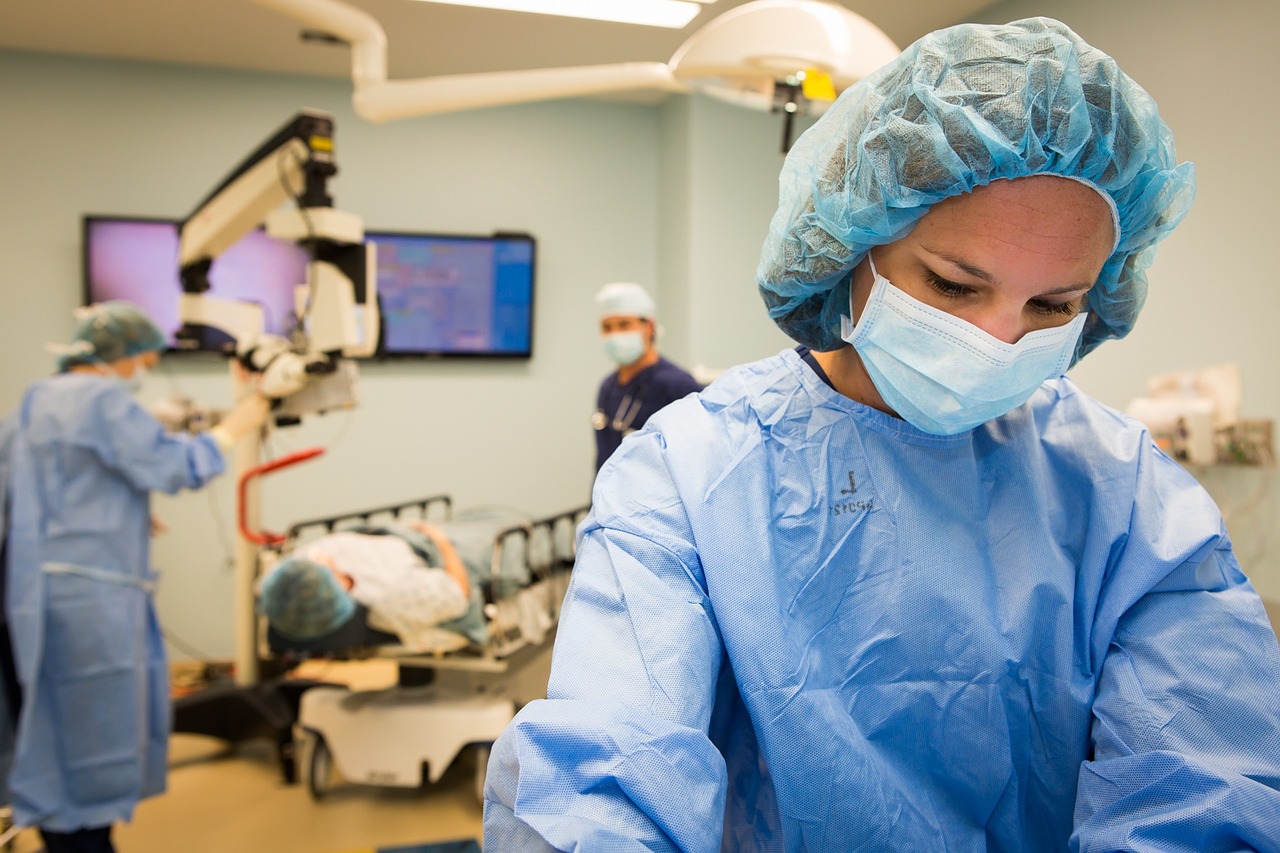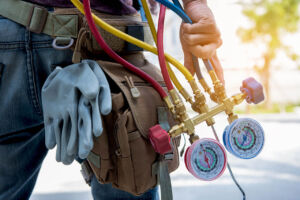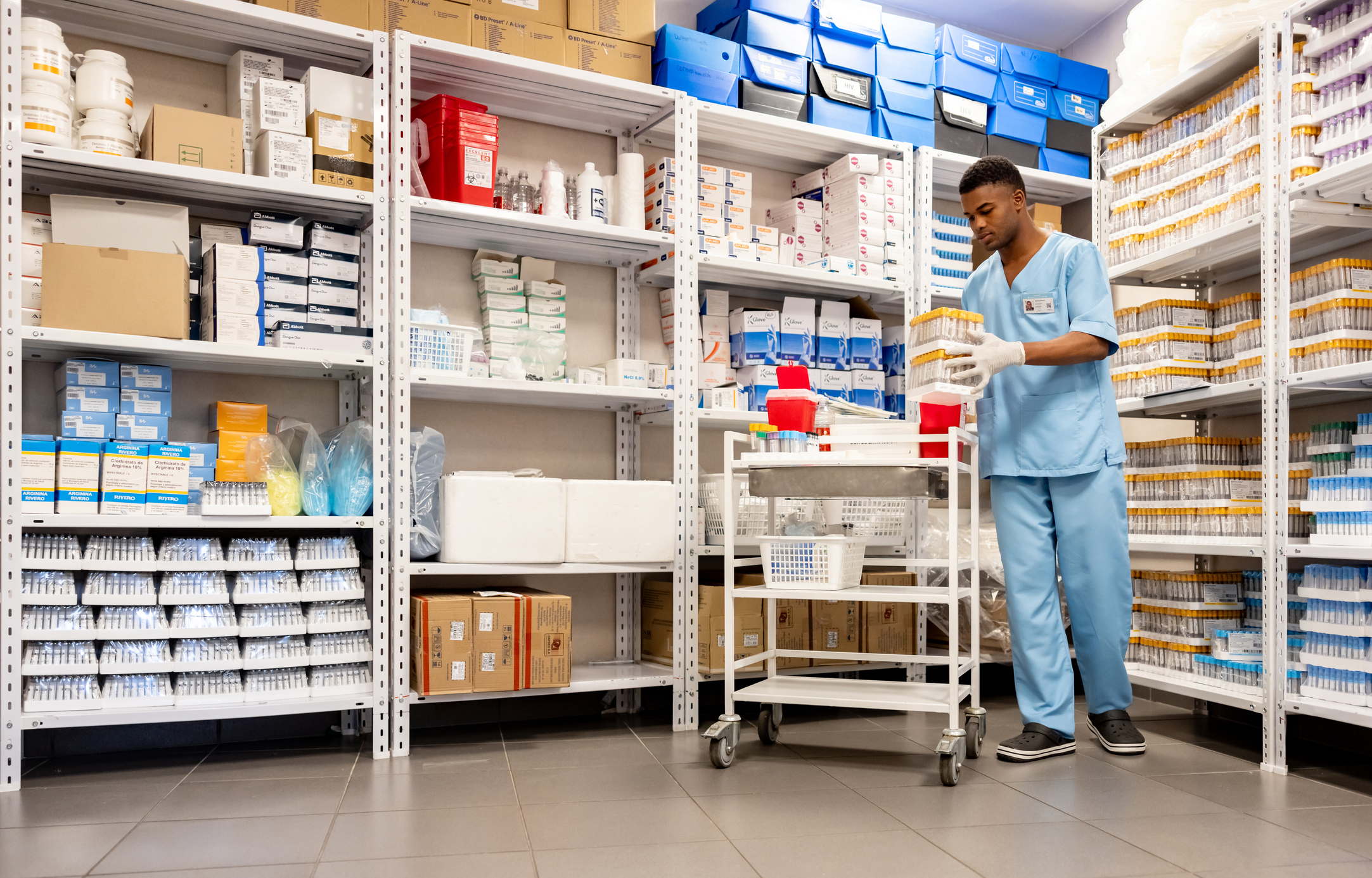Are you interested in becoming a medical assistant in Austin and want to know more about what they do? If so, you have come to the right place. This article will review many of the clinical and clerical responsibilities that a medical assistant will perform in a physician’s office, hospital or other medical facility. By the end of the article, you will know more about this rewarding career and be ready to ask questions about CyberTex and our Medical Assistant program.
What Does a Medical Assistant Do?
The medical assistant has many clinical and clerical duties within a medical facility. These are the most common duties that they perform:
Infection Control
Medical assistants are charged with keeping patients and medical staff safe with proper cleaning, sanitation and disinfection protocols. Medical facilities can harbor germs and medical assistants are tasked with infection control.
Patient Exam Prep
Medical assistants prepare patients for physician exams by escorting them to exam rooms, where they properly drape and situate patients. At this time, the medical assistant will review the patient’s health and take their vital signs.
Health History Review
It is crucial to set a baseline for a patient’s health to compare health history during the patient exam interview. Medical assistants help physicians track a patient’s medical history in their electronic health records. This includes the patient’s chief complaint and changes in allergies or medications. Knowing the past can better inform the present and make better future decisions.
Taking Vital Signs
Vital signs measure the patient’s blood pressure, pulse, respiratory rate, oxygen saturation, and temperature at the beginning of each doctor’s appointment. Vital signs offer the physician clues to health issues or concerns. Small changes may or may not be critical, so having vital sign trends can shed light on the patient’s condition.
Recording Weight and Height
Weight and height help medical assistants calculate Body Mass Index (BMI), information that physicians use to estimate a patient’s body fat. BMI is a significant predictor of many diseases and the best way to calculate medication dosages.
Patient Health Screening
Preventive screenings reveal potential health issues. Assessments of a patient’s health provide crucial information to shape a physician’s diagnosis and treatment decisions.
Specimen Collection
Medical assistants collect specimens following laboratory guidelines when doctors order lab tests. The medical assistant will instruct the patient to properly prepare for a specimen collection, so they are comfortable with the process.
EKGs & Diagnostic Tests
Medical assistants perform EKGs, urinalysis, audiometry, blood glucose testing, and pregnancy screens, to name a few. This information, coupled with vital signs, can help a physician make better healthcare diagnosis and treatment decisions.
Phlebotomy
Medical assistants perform phlebotomy or venipuncture to help the physician understand what is happening in the body without invasive procedures. Blood can tell a physician a lot about a patient’s health.
Administering Medications
Medical assistants administer oral, topical, and injectable medications under a nurse or physician’s supervision. For example, a medical assistant can administer a flu shot or Covid-19 vaccine.
Wound Care
Medical assistants don’t assess wounds but can clean wounds, change bandages, and remove sutures or staples. They also educate patients so they can care for their wounds when they return home.
Assisting with Surgical Procedures
Physicians need help performing minor surgical procedures in medical office settings. Medical assistants support physicians by setting up surgical equipment, draping patients, passing instruments, and educating the patient on after-treatment.
Emergency Care
Medical assistants are always ready for an emergency and maintain emergency equipment, so they are ready when a crisis arises. In addition, medical assistants perform phone triage to prioritize emergencies, so they are directed to the proper person in the medical facility.
Appointment Scheduling
Medical assistants are the best people to schedule appointments because they understand how long a procedure or test will take and which medical equipment is available for the physician to use during the appointment.
Electronic Health Records Management
Medical assistants manage electronic recordkeeping systems, organize charts and facilitate information exchange between patients and medical professionals. Electronic health records have changed the landscape of the medical industry, reducing medical errors and giving the entire medical team information to make better treatment decisions.
Managing Referrals
Physicians refer their patients to specialists. It is the medical assistant’s job to manage the process and forward the necessary charts and information to the specialist’s office.
Billing and Coding
Medical assistants support the office staff and other medical billing and coding specialists with coding insurance forms, submitting claims, and payment collection. In a smaller medical office, medical assistants are more likely to help out with billing and coding tasks.
Inventory Management
Since the medical assistant is constantly using the medical supplies in a medical facility, they are the best person to manage inventory. They will keep track of medical supplies and equipment, ordering when needed.
General Office Duties
Medical assistants support medical office staff by filing, faxing, and responding to emails. They are always ready to pitch in to lend a hand.
What Are the Three Types of Medical Assistant?
Medical assistants play a crucial role in healthcare, providing essential support to doctors, nurses, and patients. If you’re considering a career in this field, it’s important to understand the different types of medical assistants and their responsibilities. The three main types are clinical, clerical, and certified medical assistants.
Clinical Medical Assistants
Clinical medical assistants focus on patient care and hands-on tasks in medical settings. Their duties include taking vital signs, administering injections, preparing exam rooms, assisting with minor procedures, and collecting lab samples. They work closely with doctors and nurses to ensure smooth patient care. If you enjoy direct interaction with patients and want to be involved in the medical side of healthcare, this role could be a great fit.
Clerical Medical Assistants
Clerical medical assistants handle the administrative side of healthcare facilities. They are responsible for scheduling appointments, managing patient records, handling insurance paperwork, and answering phones. Their work ensures that medical offices run efficiently, allowing doctors and nurses to focus on patient care. If you have strong organizational skills and enjoy working with paperwork and computers, this role might be ideal for you.
Certified Medical Assistants
Certified medical assistants (CMAs) have completed formal training and passed an exam to earn professional certification. They are qualified to perform both clinical and clerical duties, making them highly valuable in the workforce. Certification demonstrates competence and can open up more job opportunities.
What Certification Do You Need to Become a Medical Assistant?
Becoming a certified medical assistant can give you a competitive edge in the healthcare field. While some medical assistants find jobs without certification, earning credentials proves your skills and knowledge, making you a stronger candidate for employers. There are several certification options available as a medical assistant, each with its own requirements.
Certified Medical Assistant (CMA)
The Certified Medical Assistant (CMA) credential is offered by the American Association of Medical Assistants (AAMA). To earn this certification, you must complete an accredited medical assisting program and pass the CMA exam. This certification is widely recognized and covers both clinical and administrative skills.
Registered Medical Assistant (RMA)
The Registered Medical Assistant (RMA) certification is offered by the American Medical Technologists (AMT). You can qualify by completing a medical assisting program, gaining work experience, or through military training. The RMA credential is respected in the healthcare industry and demonstrates strong competency in medical assisting duties.
Certified Clinical Medical Assistant (CCMA)
The Certified Clinical Medical Assistant (CCMA) certification is provided by the National Healthcareer Association (NHA). It focuses on the clinical aspects of medical assisting, making it ideal for those who want to work directly with patients in a hands-on role.
National Certified Medical Assistant (NCMA)
The National Certified Medical Assistant (NCMA) credential is awarded by the National Center for Competency Testing (NCCT). This certification requires completion of an accredited program, military training, or work experience.
What Do You Learn in a Medical Assistant Training Program?
A medical assistant training program prepares students with the skills needed to work in healthcare settings. Training covers both clinical and administrative tasks, ensuring that graduates can handle patient care and office duties efficiently. Here are the key areas covered in most programs:
Medical Terminology – Understanding common medical terms, abbreviations, and anatomy-related vocabulary used in healthcare settings.
Anatomy & Physiology – Learning about the human body’s systems, organs, and functions to assist with medical procedures and patient care.
Clinical Procedures – Training in hands-on skills such as taking vital signs, administering injections, performing EKGs, and assisting with minor medical procedures.
Phlebotomy & Lab Testing – Learning how to draw blood, collect lab samples, and conduct basic laboratory tests.
Patient Care & Communication – Developing strong interpersonal skills to interact with patients professionally and compassionately.
Medical Law & Ethics – Understanding patient privacy laws (such as HIPAA), ethical considerations, and legal responsibilities in healthcare.
Pharmacology – Learning about common medications, their uses, dosages, and how to properly administer them.
Electronic Health Records (EHR) & Medical Billing – Training in managing patient records, processing insurance claims, and handling medical coding.
Front Office Administration – Learning how to schedule appointments, handle patient intake, and manage office workflow in a medical setting.
Infection Control & Safety – Understanding proper sterilization techniques, personal protective equipment (PPE) use, and workplace safety protocols.
Where Can a Medical Assistant Work?
A career as a medical assistant offers flexibility and opportunities in a variety of healthcare settings. Whether you prefer working directly with patients or handling administrative tasks, medical assistants are in demand across different medical facilities. Here are some of the top places where medical assistants can work.
Doctor’s Offices
Most medical assistants work in private practices and specialty clinics, helping with patient care, scheduling, and medical procedures. They may assist in pediatrics, dermatology, cardiology, and more, depending on the doctor’s specialty.
Hospitals
Medical assistants in hospitals support nurses and physicians by taking vital signs, preparing patients for exams, and handling administrative tasks. Hospitals provide a fast-paced environment and the opportunity to work with a wide range of patients and medical conditions.
Urgent Care Centers
Urgent care centers treat non-emergency illnesses and injuries, and medical assistants play a key role in assisting with wound care, medication administration, and patient intake. These facilities require professionals who can work efficiently in a high-energy setting.
Outpatient Clinics
Medical assistants in outpatient care centers help with minor surgeries, diagnostic tests, and rehabilitation services. These clinics focus on same-day procedures that don’t require hospital stays.
Long-Term Care & Assisted Living Facilities
Some medical assistants work in nursing homes or assisted living facilities, supporting elderly patients by monitoring vital signs, helping with medications, and coordinating care with nurses and doctors.
Final Thoughts
Now that you know more about what a medical assistant does, it is time to learn more about CyberTex. Let us prepare you for an entry-level medical assistant position so you can help others and enjoy a rewarding career at the same time. It’s a win-win!
Want to Learn More?
The Medical Assistant Training Program at CyberTex Institute of Technology takes excellent care of you by providing hands-on training, practical experience, and the support it takes to get started in a medical assisting career without spending years in school. You will learn clinical and administrative skills and prepare to work in physician’s offices, hospitals, and other medical facilities.
Contact us today to learn more about our Austin and Killeen campuses.





